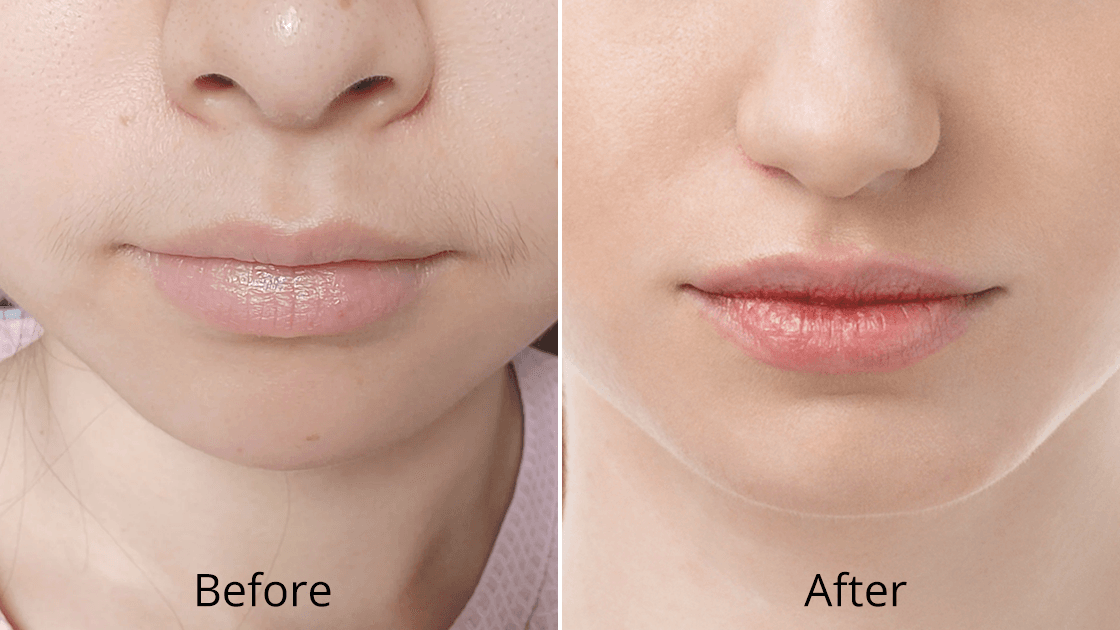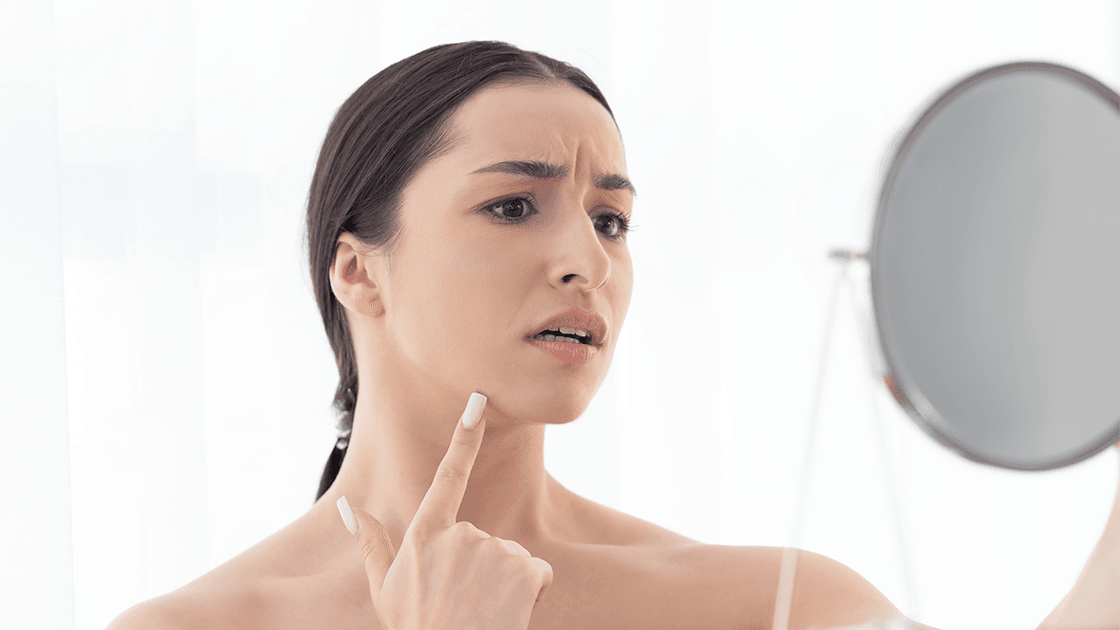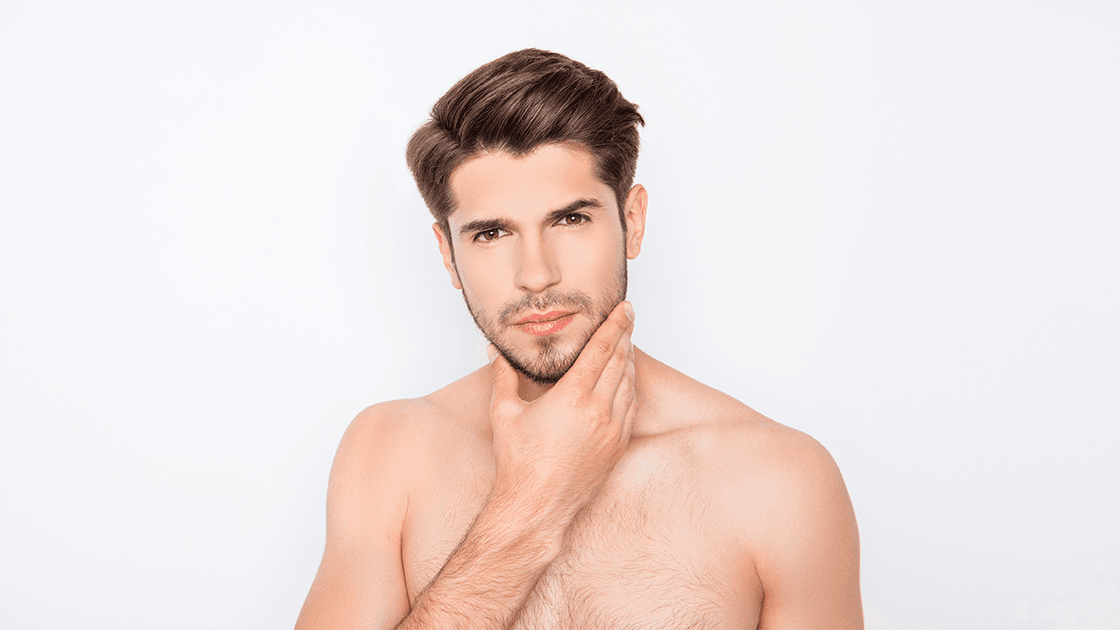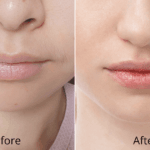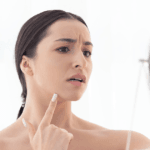1. Introduction
The revolutionary advancement of picosecond laser technology has transformed the landscape of modern dermatological treatments, offering patients unprecedented precision in addressing various skin concerns from pigmentation disorders to acne scarring. As this cutting-edge treatment becomes increasingly accessible to patients seeking skin rejuvenation, questions about post-treatment care protocols have become paramount in ensuring optimal healing outcomes and long-term therapeutic success.
1.1 What Is Pico Laser and Why It’s Popular in Skincare
Pico laser technology represents a significant breakthrough in laser dermatology, utilizing ultrashort pulse durations measured in picoseconds (trillionths of a second) to deliver therapeutic energy with unprecedented precision. These devices offer a powerful photonic signal that is at least ten times shorter than traditional Q-switched lasers, enabling selective photothermolysis with minimal thermal damage to surrounding tissues. The technology’s versatility has made it increasingly popular for treating benign pigmented lesions, melasma, photodamage, acne scarring, and general skin rejuvenation. Picosecond lasers selectively destroy target pigment without damaging healthy, normal tissue, allowing rapid clearing of abnormal pigmentation with minimal collateral damage, making them ideal for patients seeking effective treatments with reduced downtime compared to traditional laser modalities.
1.2 Common Concerns After Pico Laser Treatment
Following picosecond laser treatment, patients frequently experience concerns regarding immediate post-treatment skin appearance and the appropriate timeline for resuming normal skincare and cosmetic routines. The most prevalent questions revolve around when it’s safe to apply makeup, which products are suitable for healing skin, and how to manage the temporary side effects that commonly occur after treatment. These concerns are particularly relevant given that many patients seek Pico laser treatments for cosmetic enhancement and may have social or professional obligations that require makeup application shortly after their procedures. Understanding these patient concerns is crucial for healthcare providers to develop comprehensive post-treatment protocols that balance optimal healing with patient lifestyle needs and expectations.
1.3 Purpose of This Article: Dermatologist-Approved Advice on Wearing Makeup After Pico Laser
This comprehensive guide synthesizes current dermatological evidence and expert recommendations to provide patients with clear, science-based guidance on makeup application following Pico laser treatments. Our analysis draws from clinical research, dermatological best practices, and professional consensus to establish evidence-based protocols that prioritize skin healing while addressing patient concerns about post-treatment appearance. The recommendations presented here reflect the collective expertise of board-certified dermatologists and laser specialists who have extensive experience with picosecond laser technologies and post-treatment care protocols.
2. Understanding Pico Laser Treatment
The therapeutic mechanisms underlying picosecond laser technology involve complex photomechanical and photothermal processes that create controlled microscopic injuries within target tissues to stimulate natural healing responses and cellular renewal. Understanding these mechanisms is essential for comprehending why specific post-treatment care protocols are necessary for optimal outcomes.
2.1 How Pico Laser Works on Skin (Pigmentation, Acne Scars, Skin Rejuvenation)
Pico laser technology operates through the principle of selective photothermolysis combined with photomechanical disruption, creating a dual mechanism of action that enables precise treatment of various dermatological conditions. Fractional picosecond laser produces laser-induced optical breakdown (LIOB) and laser-induced cavitation (LIC) in the epidermis and dermis respectively, encouraging skin regeneration and dermal remodeling. For pigmentation disorders, the ultrashort pulses create photoacoustic shock waves that fragment melanin particles into smaller components that can be more easily eliminated by the lymphatic system. In acne scar treatment, the laser creates controlled micro-injuries that stimulate collagen production and dermal remodeling through activation of wound healing cascades. The technology’s precision allows for customizable treatment parameters based on specific skin concerns, depth of pathology, and patient skin type characteristics.
2.2 Immediate Skin Response After Pico Laser
The immediate post-treatment skin response to Pico laser involves predictable physiological changes that reflect the controlled tissue injury necessary for therapeutic benefit. Within minutes of treatment, patients typically observe erythema (redness) at the treatment sites, which represents vasodilation and increased blood flow to the treated areas as part of the acute inflammatory response. Microscopic edema may develop within the first few hours, creating a subtle swelling effect that indicates proper therapeutic energy delivery. The treated skin may also exhibit a characteristic “frosting” appearance immediately post-treatment, which represents temporary protein coagulation and typically resolves within 30-60 minutes. These immediate responses are considered normal therapeutic effects and indicate that appropriate energy levels have been delivered to stimulate the desired healing cascades.
2.3 Common Side Effects: Redness, Sensitivity, Swelling
Mild redness, swelling, and a tingling sensation are the most common side effects, typically subsiding within 24 to 48 hours. The erythema that develops post-treatment results from capillary dilation and increased dermal blood flow, which facilitates the removal of fragmented pigment particles and cellular debris. Skin sensitivity occurs due to temporary disruption of the stratum corneum and activation of cutaneous nerve endings by inflammatory mediators released during the healing process. Localized edema develops through increased vascular permeability and accumulation of inflammatory fluid in the interstitial spaces. Additional common effects may include mild burning sensations, temporary darkening of treated pigmented lesions, and formation of microscopic crusts over treatment sites. These effects are generally well-tolerated and resolve spontaneously as the healing process progresses.
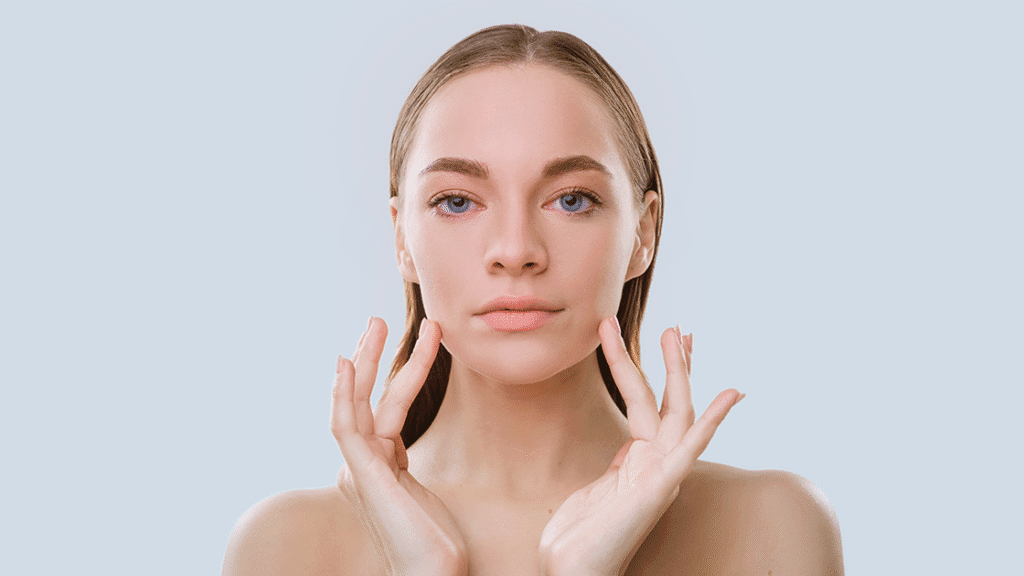
2.4 Why Post-Treatment Care Is Critical for Skin Healing
Optimal post-treatment care following Pico laser procedures is essential for maximizing therapeutic outcomes while minimizing complications and adverse effects. The immediate post-treatment period represents a critical window during which the skin’s barrier function is temporarily compromised, making it vulnerable to external irritants, bacterial contamination, and additional trauma. Proper care protocols help maintain optimal moisture levels, prevent secondary infections, and support the natural healing cascade initiated by the laser treatment. After the Pico Laser Treatment is complete, the treated area may be gently cleaned, and a soothing ointment or cream may be applied to help with healing. Adherence to dermatologist-recommended aftercare protocols significantly influences final cosmetic outcomes, treatment efficacy, and the risk of complications such as post-inflammatory hyperpigmentation or scarring.
3. Can You Wear Makeup After Pico Laser?
The question of makeup application following Pico laser treatment requires careful consideration of multiple factors including treatment intensity, individual healing responses, and the specific type of makeup products being considered. Professional dermatological guidance emphasizes the importance of prioritizing skin healing over cosmetic concerns during the immediate post-treatment period.
3.1 Dermatologists’ General Recommendations on Makeup Post-Treatment
Dermatologists consistently advise that applying makeup immediately after the procedure is not recommended to allow your skin to heal, and when patients do decide to reintroduce makeup, they should opt for gentle, non-comedogenic products. The professional consensus emphasizes that the compromised skin barrier following laser treatment makes the skin particularly susceptible to irritation from cosmetic ingredients, preservatives, and fragrances commonly found in makeup formulations. Board-certified dermatologists recommend allowing the skin to complete its initial healing phase before introducing any potential irritants. The recommendation extends beyond simple product avoidance to include considerations about application techniques, removal methods, and the timing of makeup reintroduction based on individual healing progress rather than arbitrary timelines.
3.2 Why Immediate Makeup Application Is Not Advised
For at least 24 hours post-treatment, patients should avoid makeup, perfumes, and harsh skincare products. This allows the skin to breathe and recover without added irritation. Immediate makeup application carries several risks. Mechanical irritation may occur from brushes or sponges. Cosmetic ingredients can also cause chemical irritation. Healing tissues may be occluded, slowing the natural recovery process. Contaminated makeup tools increase the risk of bacterial infection. After laser treatment, the stratum corneum becomes compromised. The weakened barrier makes skin more permeable to irritating substances. In addition, the inflammatory response heightens skin sensitivity. Even products once well-tolerated can trigger adverse reactions.
3.3 Typical Timeline: When It’s Safe to Resume Makeup Use
Professional recommendations suggest avoiding makeup for the first 24-48 hours after treatment, and when patients do start using makeup again, they should opt for mineral-based products that are less likely to irritate the skin. However, the timeline can vary significantly based on treatment intensity and individual healing responses. Some clinical protocols allow patients to apply light makeup to treated areas the next day, particularly for lower-intensity treatments. For more aggressive treatments or patients with sensitive skin, the waiting period may extend to 72 hours or longer. The key determinant is the resolution of acute inflammatory signs including erythema, edema, and skin sensitivity rather than adherence to rigid timelines.
3.4 Key Risks of Applying Makeup Too Soon
Premature makeup application carries several significant risks that can compromise treatment outcomes and potentially lead to complications. Chemical irritation from cosmetic ingredients can exacerbate the inflammatory response and prolong healing times, while mechanical trauma from application techniques can disrupt the delicate healing process. Occlusion of healing tissues by makeup products may impede natural moisture regulation and cellular turnover processes essential for optimal recovery. Applying makeup or using harsh skincare products immediately after treatment can cause increased sensitivity and irritation to the freshly treated skin. Additionally, contaminated makeup tools pose infection risks to compromised skin, and certain cosmetic ingredients may increase photosensitivity, potentially leading to post-inflammatory hyperpigmentation when combined with UV exposure.
4. Dermatologist-Approved Guidelines for Makeup Use After Pico Laser
Evidence-based guidelines for makeup application following Pico laser treatment emphasize individualized approaches that consider treatment parameters, skin type characteristics, and healing progression. These protocols have been developed through clinical experience and research to optimize both safety and cosmetic outcomes.
4.1 Waiting Period Before Applying Makeup (24–72 hours, depending on treatment intensity)
The recommended waiting period varies systematically based on treatment intensity, with superficial treatments typically requiring 24-48 hours of makeup avoidance, while deeper or more aggressive treatments may necessitate 72 hours or longer before cosmetic application is advisable. Fractional treatments that create deeper micro-injuries generally require extended healing periods compared to non-fractional applications. Individual patient factors including skin type, age, healing capacity, and concurrent medications also influence optimal timing recommendations. Dermatologists assess healing progress through clinical evaluation of erythema resolution, absence of crusting or scaling, and return of normal skin texture before authorizing makeup resumption. The goal is to ensure adequate barrier function restoration and reduction of inflammatory activity before introducing potential irritants.
4.2 Choosing the Right Makeup Products Post-Laser
Product selection for post-laser makeup application requires careful consideration of ingredient profiles, formulation characteristics, and compatibility with healing skin. Mineral-based foundations and cosmetics are generally preferred due to their non-comedogenic properties, absence of preservatives and fragrances, and reduced potential for irritation. Hypoallergenic formulations specifically designed for sensitive skin provide additional safety margins for post-procedure use. Products should be free from potentially irritating ingredients including alpha hydroxy acids, retinoids, fragrances, and harsh preservatives. Water-based formulations are generally preferred over oil-based products to minimize pore occlusion and bacterial growth. Patients should also consider using new, uncontaminated products rather than previously opened cosmetics to reduce infection risk.
4.3 How to Apply Makeup Safely After Pico Laser
Safe makeup application techniques for post-laser skin emphasize gentle methods that minimize mechanical trauma and maintain sterile conditions. Clean hands and sterile applicators are essential to prevent bacterial contamination of healing tissues. Patting or stippling motions should replace rubbing or dragging techniques that could disrupt delicate healing processes. Minimal pressure application helps prevent mechanical irritation while achieving adequate coverage. Layering should be avoided in favor of single, light applications that allow skin to breathe and maintain normal physiological functions. New, clean brushes or disposable applicators reduce contamination risks compared to previously used tools. The application process should be discontinued immediately if any signs of irritation, burning, or unusual reactions develop.
4.4 Best Practices for Makeup Removal After Pico Laser
Makeup removal following post-laser application requires specialized techniques that prioritize skin protection and healing support. Gentle, fragrance-free cleansers specifically formulated for sensitive skin provide optimal cleansing without excessive irritation. Oil-based cleansers may be avoided initially due to potential pore-clogging effects on healing skin. Soft cotton pads or clean fingertips should be used for removal rather than harsh washcloths or exfoliating tools. Lukewarm water temperatures prevent thermal irritation while effectively removing cosmetic products. Double cleansing methods should be avoided unless specifically recommended by the treating dermatologist. Post-cleansing moisturization with dermatologist-recommended products helps restore barrier function and support continued healing processes.
5. Skincare Before Makeup Application After Pico Laser
The foundation of successful post-laser makeup application lies in proper skincare preparation that supports healing while creating an optimal base for cosmetic products. This preparatory phase requires careful product selection and application techniques tailored to post-laser skin characteristics.
5.1 Importance of Hydration and Barrier Repair
Adequate skin hydration and barrier function restoration are fundamental prerequisites for safe makeup application following Pico laser treatment. The laser-induced disruption of the stratum corneum compromises natural moisture retention and protective barrier functions, making intensive hydration protocols essential for optimal healing. Hyaluronic acid-based moisturizers provide excellent hydration through their ability to bind multiple times their weight in water, creating a moisture reservoir that supports cellular repair processes. Ceramide-containing formulations help restore barrier lipid components that may have been disrupted during treatment. The hydration status directly influences the skin’s tolerance to cosmetic products and the quality of makeup application, with well-hydrated skin providing smoother application and better cosmetic outcomes.
5.2 Recommended Soothing Ingredients (Hyaluronic Acid, Aloe Vera, Centella Asiatica)
Evidence-based soothing ingredients play crucial roles in supporting post-laser skin healing while preparing the skin for eventual makeup application. Hyaluronic acid provides intensive hydration and supports tissue repair through its role in wound healing cascades and cellular migration processes. Aloe vera contributes anti-inflammatory properties through its polysaccharide components and provides cooling, soothing effects that help reduce post-treatment discomfort. Centella asiatica extract offers significant anti-inflammatory benefits through its triterpene compounds, which help modulate inflammatory mediator production and support collagen synthesis. These ingredients work synergistically to reduce erythema, accelerate healing, and improve skin tolerance to subsequent cosmetic applications. Additional beneficial ingredients may include niacinamide for barrier repair, panthenol for moisture retention, and zinc oxide for gentle protection.
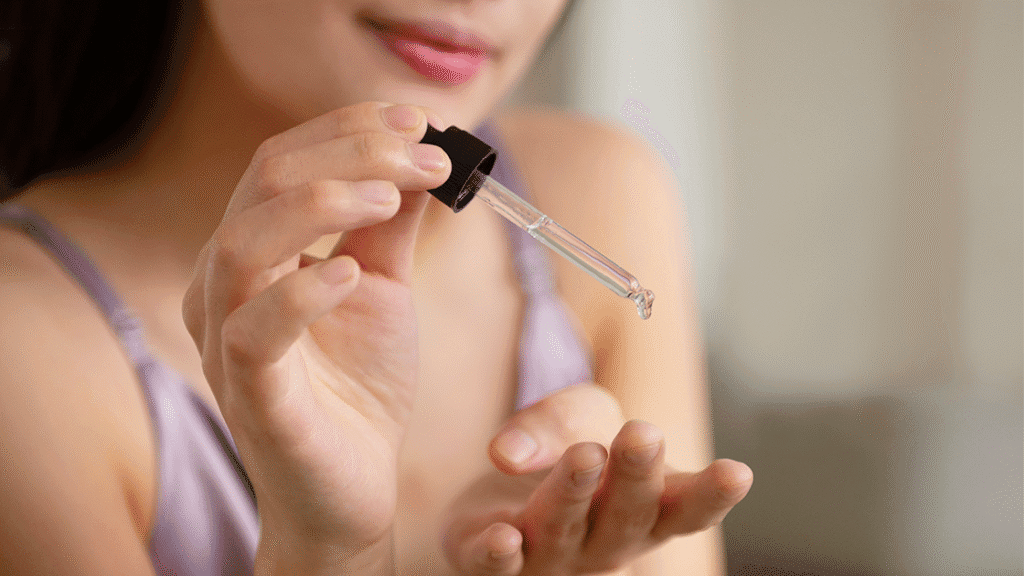
5.3 Sunscreen as a Mandatory Step Before Makeup
Broad-spectrum sunscreen application represents a non-negotiable component of post-laser skincare protocols, serving both protective and preparatory functions before makeup application. Patients should try to avoid sun exposure if possible in the week after pico laser treatment, and when sun exposure is unavoidable, appropriate photoprotection becomes critical. Post-laser skin exhibits increased photosensitivity due to compromised barrier function and ongoing inflammatory processes that can predispose to post-inflammatory hyperpigmentation. Mineral sunscreens containing zinc oxide or titanium dioxide are generally preferred over chemical formulations due to their reduced irritation potential and immediate protection upon application. SPF 30 or higher provides adequate protection for most post-laser applications, with reapplication every two hours when makeup allows.
5.4 Layering Skincare and Makeup Without Compromising Healing
The strategic layering of skincare and makeup products requires careful consideration of product interactions, absorption timing, and cumulative effects on healing tissues. Each layer should be allowed adequate absorption time (typically 5-10 minutes) before subsequent product application to prevent pilling, reduce interaction risks, and ensure proper skin penetration. The total number of products should be minimized during the initial healing phase to reduce exposure to potential irritants and allow for easier identification of problematic ingredients if reactions occur. Water-based products should generally be applied before oil-based formulations to optimize absorption and prevent barrier formation that could impede subsequent product penetration. The overall approach should prioritize healing support over cosmetic enhancement during the critical initial recovery period.
6. Alternative Solutions While Avoiding Makeup
During the mandatory makeup-free period following Pico laser treatment, patients can utilize alternative approaches to address cosmetic concerns while supporting optimal healing outcomes. These alternatives provide practical solutions that balance appearance enhancement with therapeutic requirements.
6.1 Using Tinted Sunscreens or BB Creams Instead of Heavy Makeup
Tinted sunscreens and lightweight BB (beauty balm) creams serve as excellent alternatives to makeup during the post-laser healing period. They provide cosmetic enhancement while delivering therapeutic benefits. These hybrid products combine broad-spectrum sun protection with subtle color correction. They address the dual needs of photoprotection and appearance improvement without the complexity of full makeup applications. Mineral-tinted sunscreens offer physical UV protection with added light coverage. This helps camouflage residual erythema or minor imperfections. BB creams designed for sensitive skin often include soothing ingredients. Common examples are niacinamide, hyaluronic acid, and antioxidants, which support healing while providing coverage. Their lightweight formulations also require gentler removal methods. This reduces mechanical irritation during cleansing and helps protect fragile skin.
6.2 Gentle Color-Correcting Products Approved for Sensitive Skin
Targeted color correction can effectively address specific post-laser concerns without requiring full-coverage makeup applications. Green-tinted primers or correctors can neutralize residual redness, while peach or orange undertones can counteract any temporary darkening of pigmented lesions. These products should be specifically formulated for sensitive skin conditions and free from common irritants including fragrances, parabens, and harsh preservatives. Application should be limited to areas of specific concern rather than full-face coverage to minimize overall product exposure. The selection should prioritize products that have been dermatologically tested and approved for use on compromised or healing skin. Patch testing on a small, inconspicuous area may be advisable before full application, even for products marketed as hypoallergenic.
6.3 Natural Ways to Reduce Redness and Support Healing
Non-cosmetic approaches to managing post-laser redness and supporting healing processes provide safe, effective alternatives during the makeup restriction period. Cold compresses applied for 10-15 minutes several times daily can help reduce inflammation and provide symptomatic relief from burning or stinging sensations. Elevating the head during sleep may help reduce facial edema and accelerate fluid resolution. Adequate hydration through increased water intake supports systemic healing processes and helps maintain skin moisture from within. Anti-inflammatory dietary modifications, including increased omega-3 fatty acid consumption and reduced processed food intake, may help modulate systemic inflammatory responses. Stress reduction techniques including meditation or gentle yoga can help minimize cortisol-mediated inflammatory responses that might interfere with healing processes.
7. Expert Insights: Dermatologists’ Final Recommendations
The culmination of professional dermatological experience and clinical research provides clear guidance for patients navigating the post-Pico laser period, emphasizing evidence-based approaches that optimize both safety and aesthetic outcomes.
7.1 Summary of Do’s and Don’ts for Makeup After Pico Laser
DO: Wait for dermatologist clearance before resuming makeup application, choose mineral-based or hypoallergenic formulations, use clean application tools and techniques, remove makeup gently with appropriate cleansers, and discontinue use immediately if irritation develops. Prioritize skin healing over cosmetic concerns, maintain consistent sun protection, and follow personalized aftercare instructions provided by your treating physician.
DON’T: Apply makeup immediately post-treatment, use expired or contaminated products, employ harsh application or removal techniques, ignore signs of adverse reactions, or resume normal makeup routines without professional guidance. Avoid products containing known irritants, skip recommended waiting periods, or compromise sun protection for cosmetic preferences. The key is patience and adherence to professional recommendations rather than rushing the recovery process.
7.2 Importance of Following Personalized Post-Laser Care Plans
Individual patient characteristics including skin type, treatment parameters, healing capacity, and lifestyle factors necessitate personalized approaches to post-laser care that may differ from generalized recommendations. Dermatologists consider multiple variables when developing customized protocols, including Fitzpatrick skin type, treatment intensity, concurrent medications, medical history, and specific aesthetic goals. Patients with darker skin types may require extended makeup restriction periods due to increased risk of post-inflammatory hyperpigmentation, while those with sensitive skin conditions may need modified product recommendations. Professional monitoring during the healing period allows for real-time adjustments to care protocols based on individual response patterns. Regular follow-up appointments enable early identification and management of any complications or unexpected reactions that may occur during recovery.
7.3 Long-Term Benefits of Proper Aftercare for Pico Laser Results
Adherence to proper aftercare protocols plays a crucial role in Pico laser outcomes. Appropriate care directly correlates with better results and fewer complications. Patients who follow dermatologist guidance usually achieve greater pigmentation clearance and visible texture improvement. They also reduce the risk of post-inflammatory hyperpigmentation or permanent scarring. Advances in picosecond laser technology have expanded clinical applications. These now include benign pigmented lesions, photodamage, melasma, and even scar revision. Proper aftercare is therefore more important than ever for maximizing results across varied treatment goals. Long-term benefits include improved efficacy, higher patient satisfaction, and a reduced need for repeated sessions. Proper care also preserves long-term skin health and resilience. The investment in consistent aftercare yields dividends both in immediate healing and sustained aesthetic improvement.
8. Conclusion
The integration of evidence-based post-treatment protocols with patient education represents the cornerstone of successful Pico laser outcomes, with makeup application timing serving as a critical component of comprehensive aftercare strategies.
8.1 Final Thoughts: Prioritizing Skin Healing Over Cosmetics
The temporary restriction of makeup use after Pico laser is a small investment. It yields significant returns in treatment efficacy and long-term skin health. Like skincare products, cosmetics may irritate freshly treated skin. Patients should wait 2–3 weeks for recovery or seek dermatologist guidance for personalized advice. The immediate post-treatment period provides a unique opportunity for repair and regeneration. This healing window should not be compromised by premature cosmetic application. Patients who prioritize recovery over immediate cosmetic use achieve superior results. They also lower the risk of post-laser complications. Discipline during the initial healing phase builds positive skincare habits. These often extend beyond the treatment period and enhance long-term skin health and appearance.
8.2 Why Patience Leads to Better Laser Treatment Outcomes
The correlation between patient compliance with post-treatment protocols and superior aesthetic outcomes has been consistently demonstrated across multiple dermatological studies and clinical experiences. Patience during the healing process allows for optimal tissue repair, proper inflammatory resolution, and complete barrier function restoration that collectively contribute to enhanced treatment results. Premature resumption of normal cosmetic routines can interrupt healing cascades, potentially compromising the cellular renewal processes that drive therapeutic improvement. The temporary inconvenience of modified cosmetic routines is significantly outweighed by the lasting benefits of properly healed skin that responds optimally to the laser-induced regenerative processes. Long-term patient satisfaction correlates strongly with adherence to professional recommendations during the critical healing period.
9. Frequently Asked Questions About Makeup After Pico Laser
Most dermatologists recommend waiting 24-72 hours before applying foundation, depending on treatment intensity and individual healing response. Always consult your provider for personalized timing recommendations based on your specific treatment parameters.
Mineral-based, fragrance-free, and hypoallergenic cosmetics are generally safest. Look for products specifically formulated for sensitive skin and avoid those containing acids, retinoids, or harsh preservatives.
Light concealer application may be permitted after the initial healing period (typically 24-48 hours), but green-tinted color correctors are often more effective for neutralizing redness while being gentler on healing skin.
Avoid products containing alcohol, fragrances, parabens, alpha hydroxy acids, beta hydroxy acids, and retinoids during the initial healing period. Always read ingredient lists carefully.
Use gentle, fragrance-free cleansers with lukewarm water and soft cotton pads. Avoid harsh rubbing, exfoliating tools, or aggressive removal techniques that could irritate healing skin.
Only use clean, newly sanitized brushes or disposable applicators to prevent bacterial contamination. Consider replacing old brushes or sponges to ensure optimal hygiene during the healing period.

